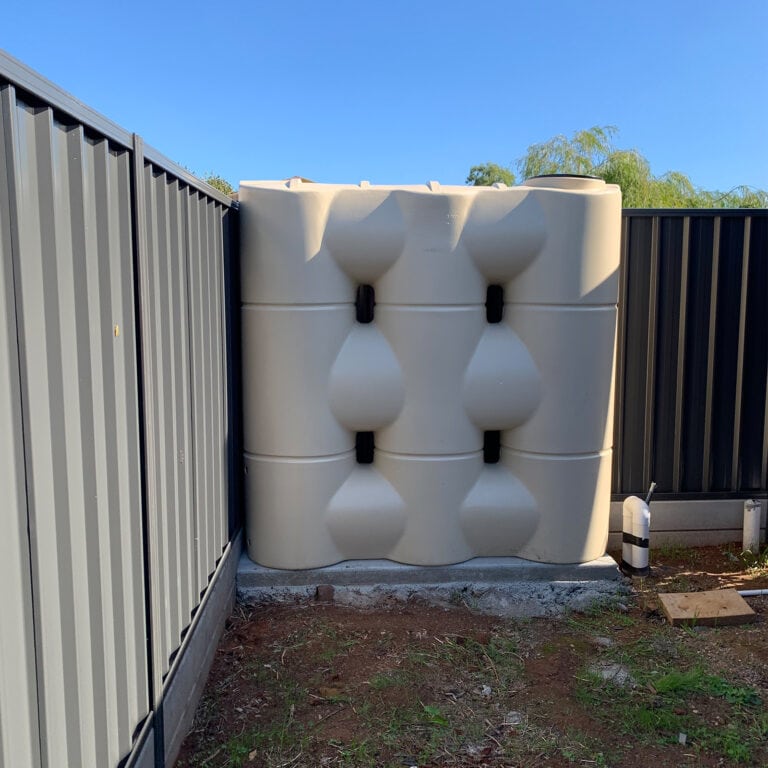Budget Friendly Slimline Water Tanks: Maximize Your Rain Harvesting
Checking Out the Different Uses Rainwater Containers for Residential and Commercial Characteristics
As the international focus on lasting living techniques continues to increase, the use of rain tanks in both property and business settings has arised as a relevant solution. These tanks use a reservoir for rain harvesting, providing a myriad of prospective applications that expand far past mere storage space. From watering to commode flushing and landscaping, the flexibility of rain containers is large. Their assimilation right into business properties opens up a realm of possibilities for environmentally conscious services. The diverse uses rain containers provide a compelling case for their adoption, not only as a useful water-saving step yet likewise as a testimony to liable resource management.
Benefits of Making Use Of Rainwater Containers
Utilizing rain tanks uses many advantages for both houses and areas in terms of water conservation and sustainability. Among the vital benefits of utilizing rain storage tanks is the substantial decrease in reliance on keys supply of water - Slimline water tanks. By recording and keeping rain for later usage, people and communities can decrease their demand for treated water, eventually easing the burden on water therapy facilities and decreasing energy intake associated with water transport and treatment
Additionally, rainwater collecting via tanks offers a trustworthy alternative water resource during times of water constraints or scarcities. This saved rain can be utilized for various non-potable objectives such as watering, flushing bathrooms, and cleaning clothes, lowering the pressure on conventional water resources. Furthermore, using rain storage tanks can bring about cost financial savings for both homes and neighborhoods by decreasing water costs and decreasing the need for costly framework developments to satisfy expanding water needs.
Essentially, the usage of rainwater tanks uses a sustainable and environmentally friendly technique to water monitoring, profiting both private users and the wider community in terms of water conservation, cost-efficiency, and durability.
Rain Container Use in Watering
Given the benefits of rainwater tanks in saving water resources and decreasing reliance on mains supply of water, a significant application exists in utilizing saved rain for irrigation functions - Slimline water tanks. Rainwater gathering systems can successfully collect and store rainwater, offering a lasting water source for sprinkling yards, yards, and agricultural areas. By utilizing rainwater for irrigation, homeowner can decrease their reliance on treated water sources, resulting in set you back financial savings and environmental benefits

One of the main advantages of using rain for watering is its pureness. Rainwater is naturally soft and devoid of the chemicals and additives often discovered in mains water, making it suitable for nourishing plants without the danger of dangerous effects. Additionally, rain is at ambient temperature level, which can benefit plant growth by staying clear of temperature level shocks that can happen with chilly keys water.
Rainwater Containers for Bathroom Flushing

Applying rainwater storage tanks for toilet flushing is a cost-effective and eco pleasant technique that can be easily incorporated into both domestic and industrial read here residential or commercial properties. The saved rain can be made use of to flush bathrooms by find more attaching the container to the existing pipes system. This simple yet reliable service can dramatically decrease water consumption in a building, especially in locations where water deficiency is an issue.

Incorporating Rainwater Tanks in Landscape Design
A reliable approach for boosting sustainability in landscaping involves integrating rain storage tanks to enhance water use and promote environmentally friendly practices - Slimline water tanks. Including rain storage tanks in landscaping offers countless advantages for both residential and business buildings. These containers can catch and store rain overflow from roofs, which can after that be utilized for sprinkling gardens, lawns, and plants. By making use of rain for recommended you read irrigation purposes, home owners can minimize their reliance on metropolitan water sources, resulting in cost financial savings and conservation of priceless water resources.
In addition to supplying a lasting water source for landscaping demands, rainwater storage tanks can additionally help in handling stormwater drainage. By capturing rainwater that would certainly or else move into tornado drains pipes, these tanks can reduce disintegration, lower flooding risks, and stop air pollution of all-natural water bodies. Furthermore, including rain storage tanks in landscape design can add to the overall aesthetic charm of the residential property, showcasing a commitment to environmental stewardship.
Business Applications of Rain Tanks
Using rainwater tanks in business setups uses a sustainable service for water management and conservation, profiting services and the environment alike. One key business use is for watering objectives, where gathered rain can be utilized to water landscaping, yards, and farming fields bordering industrial residential or commercial properties.
Moreover, rain tanks can be incorporated right into the fire suppression systems of commercial buildings. By having a dedicated water resource for firefighting functions, organizations can improve their fire precaution and possibly lower insurance costs. Additionally, rain collected in storage tanks can be dealt with and utilized for non-potable purposes within business residential properties, such as flushing toilets, cleansing, and cooling down systems. This not only preserves freshwater resources yet also reduces operating costs for organizations. In general, the unification of rain tanks in industrial setups presents a functional and eco responsible technique to water management.
Conclusion
From watering to bathroom flushing and landscaping, the usage of rain storage tanks can help conserve water resources and lower water expenses. In general, the flexibility and sustainability of rain containers make them an important investment for any kind of building proprietor looking to increase water efficiency.